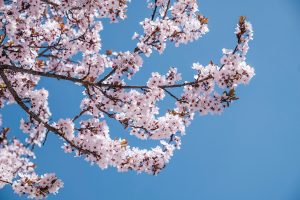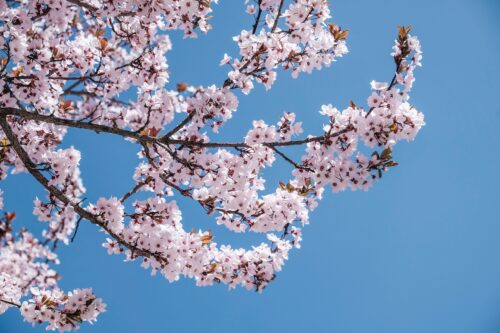All About Cherry Blossoms

Photo by Louis Lo on Unsplash
Cherry blossom season is upon us! I’m sure you’ve been seeing these Instagrammable flowers all over the internet as they enter full bloom, with 6.4 million posts and counting under #cherryblossom. Unfortunately, it’s not so easy to race over to Japan to see them in their native habitat. Luckily, they have been found in the U.S. for more than 100 years.
In this week’s #FunFactFriday, let’s explore more about this famous flower, and how it made its way over to the U.S.
- Cherry blossom trees in the U.S. date back to 1912 – Japan sent them as an act of goodwill, and we reciprocated in 1915 by sending back dogwood trees.
- This wasn’t the first time Japan tried sending the flowers. They sent them once before in 1910, but U.S. inspectors from the Department of Agriculture recommended burning the gift after finding insects and disease. It nearly caused a diplomatic crisis, according to the Washingtonian.
- George Washington’s famous story about chopping down a cherry tree is actually a myth. Who knew?
- The flowers have a peak bloom date, otherwise known as the time when over 70 percent of the trees have bloomed. This year, it falls on April 4, and can last up to 14 days.
- The scent is so popular, it was once the best-selling fragrance in the U.S. with 30 million units sold every year.
- Cherry blossoms are famously found in Japan and Washington D.C., but Marcon, Georgia is the surprising home to the “Cherry Blossom Capital of the World.”
- There are 200 different varieties of cherry blossoms, with the most popular being the Somei Yoshino.
- This year, the National Cherry Blossom Festival Paradeis set to take place on April 13. If you’re in Washington D.C., you can’t miss it!
- They aren’t always pink! Other colors include white, green and yellow.
- Most importantly to know – you can get arrested for damaging the flowers. If you’re feeling tempted to pluck one off, think again!
Information sourced from:
http://bit.ly/2UDsfZR
http://bit.ly/2IqS08W

